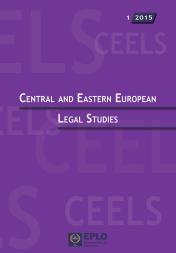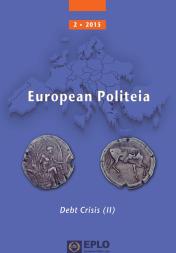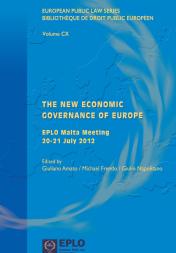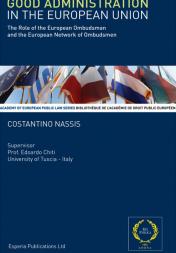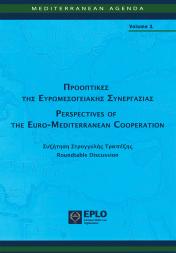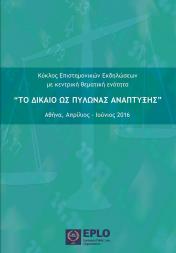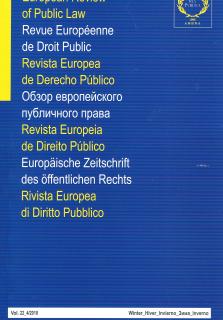
Administrative Law / Droit administratif
2010
Spain / Espagne
As we had the chance to present in this chronicle, with regard to the most relevant Spanish regulations in Administrative Law of 2010, the economic crisis has been a key issue. In fact, it can be argued that most of the work of the Spanish legislator concerning Public Law was aimed, exactly, at the adoption of measures considered urgent and necessary in order to face this situation; in particular, in the form of Royal Decree-Law. However, the Spanish legislator has found the time and the strength required to deal with other issues, such as: the reform of the Constitutional Court and the Judiciary; the revision of the Criminal Code; the modification of one Statute of Autonomy (i.e., Revision of the Navarre Legal System); the reform of the general electoral system, and, most importantly for the purpose of this chronicle, the reorganisation of the audiovisual sector and the redefinition of several aspects of the environmental policy. The latter have been implemented, respectively, through: (a) Law 7/2010, of March 31, on General Audiovisual Communication; (b) Law 41/2010, of November 29, on the Marine Environment Protection; and (c) Law 13/2010, of July 5, amending the previous Law 1/2005, of March 9, on trade in greenhouse gases (GHG). In summary, regarding the first one, that is, Law 7/2010, of March 31, on General Audiovisual Communication, suffice it to say that its main aim is to adapt itself to the current times, meaning: (a) to respond to an increasing social demand relating to access to this sector; (b) to take into account the relevance of the “audiovisual” sector to the Spanish economy and industry in general; and (c) to adapt the previous regulation in this area to the new technological phenomena (DTT, HD, Internet, mobility, etc.). For their part, the second and the third laws abovementioned are being designed to protect the environment. In fact, Law 41/2010, of November 29, on the Marine Environment Protection, establishes ex novo the regulation of this most valuable natural resource. However, in our opinion, its substantive innovations are not as many as we would have expected (for example, this new regulation, in several cases, overlaps with the previous legislation). Apart from that, this Law does not resolve in a satisfactory way the delicate issue of the limits of the Spanish State marine waters. Finally, with regard to Law 13/2010, of July 5, on greenhouse gases, suffice it to say that, in essence, we are in front of a provision which serves a double purpose: (a) to transpose two seminal directives of the European Union on this matter (Directives 2008/101/EC of November 19, and 2009/29/EC of April 23); and (b) to clarify, as far as possible, the confusing and complicated Spanish normative framework. At this point, we can only hope that we have fulfilled the purpose of this chronicle, that is to provide the European reader with an overview, as complete as possible, of the activity developed by the Spanish state legislator during the year 2010 as far as Administrative Law is concerned.
Como hemos tenido ocasión de comprobar en esta crónica, y por lo que respecta a las leyes y normas españolas más relevantes del año 2010 en lo que al Derecho administrativo se refiere, la crisis económica ha ocupado el centro de la escena. De hecho, puede afirmarse sin miedo a error que buena parte de la labor del legislador estatal de “lo público” ha estado encaminada, justamente, a la adopción de las medidas que se han considerado urgentes y necesarias para hacer frente a esta situación; en particular, bajo la forma de Real Decreto-ley. Con todo, el legislador español ha encontrado tiempo y fuerzas suficientes para abordar otras cuestiones como, por ejemplo: la reforma del Tribunal Constitucional y del Poder Judicial; la revisión del Código Penal; la modificación de algún que otro Estatuto de Autonomía (i.e., el amejoramiento del Régimen Foral de Navarra); la reforma del régimen electoral general; y, desde luego y en lo que aquí nos atañe, la reordenación del sector audiovisual y el replanteamiento de ciertos aspectos de la política ambiental. Esto último se ha lleva a efecto, respectivamente, a través de la Ley 7/2010, de 31 de marzo (General de la Comunicación Audiovisual); y de las Leyes 41/2010, de 29 de noviembre (de Protección del Medio Marino) y 13/2010, de 5 de julio, por la que se modifica la Ley 1/2005, de 9 de marzo (sobre comercio de GEI). A modo de apretada síntesis y en cuanto a la primera de ellas, la Ley 7/2010, de 31 de marzo, General de la Comunicación Audiovisual, baste señalar que tiene como misión principal adaptarse a los tiempos, lo que significa: a) dar respuesta a una creciente demanda social referida al acceso a este sector; b) tomar conciencia de la relevancia de “lo audiovisual” para la economía e industria española en general; y c) adecuar la regulación previa de esta materia a los nuevos fenómenos tecnológicos (TDT, HD, Internet, movilidad, etc.). Por su parte, la segunda y la tercera leyes antes citadas están puestas al servicio del bien jurídico medio ambiente. En efecto, la Ley 41/2010, de 29 de noviembre, de Protección del Medio Marino lo hace instaurando un pretendido régimen ex novo de este preciado y precioso recurso natural. Ahora bien, en nuestra opinión, sus novedades sustantivas no son tantas como cabría esperar (señálese, por ejemplo, que en no pocos casos esta nueva regulación se superponen a la normativa anterior). Por lo demás, esta Ley no resuelve de un modo satisfactorio el delicado tema del alcance de las aguas marinas del Estado español. En lo que respecta a la Ley 13/2010, de 5 de julio, referida a los GEI, baste decir que estamos, en esencia, ante una disposición que cumple un doble objetivo, a saber: a) transponer dos directivas capitales de la Unión Europea en esta materia (la 2008/101/CE, de 19 de noviembre y la 2009/29/CE, de 23 de abril); y b) clarificar, hasta donde le ha sido posible, el confuso y complicado cuadro normativo español. Llegados a este punto, no nos queda sino confiar en haber cumplido con el propósito de esta crónica, a saber: ofrecer al lector europeo un cuadro, lo más acabado posible, de la actividad que ha desarrollado el legislador estatal español durante este año 2010 en lo que al Derecho administrativo se refiere.





